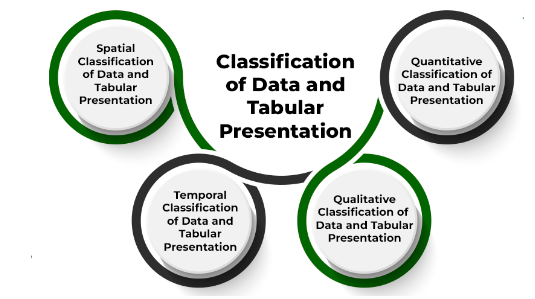
In the context of clinical research, SAS (Statistical Analysis System) is a software suite widely used for data management, statistical analysis, and reporting in clinical trials. It helps organize and analyze large datasets, ensures regulatory compliance, supports clinical trial design, and facilitates the creation of detailed reports for regulatory submissions. SAS is a key tool for professionals such as biostatisticians and clinical programmers in the pharmaceutical and healthcare industries.
1. Compare SAS medical module with Oracle Clinical.
Ans:
SAS Clinical:
- It is mainly used for a statistical analysis.
- It is built on idea of converting data management to that statistical analysis.
Oracle Clinical:
- It is mainly used for a data management.
- It is built on idea of assisting data management.
2. What is Case Report Tabulation?
Ans:
This report is essentially what all pharmaceutical companies must submit to the FDA in order to obtain the required approvals. The Clinical SAS module is reliable enough to be used in the efficient creation of this report.

3. What is Data Step, In Clinical SAS module?
Ans:
It is basically the function that is deployed for the purpose of creating SAS dataset and along with data dictionary. All the information regarding the variables along with properties shall be located in a data dictionary.
4. What is Program Data Vector in SAS memory?
Ans:
It is used to represent a logical area. Whenever SAS considers a database, there is input buffer that automatically gets created during the compilation and holds a record from extensible file.
5. What exactly are data types are present in SAS?
Ans:
There are the two data types present:
- Numeric.
- Character.
6. Is variable comparison possible in SAS approach?
Ans:
SAS allows the comparison ofa same and the users have no reason to worry about it. The fact is there are two functions for which are NODUP and NODUP key. In database, the first is considered for a purpose of comparing all variables whereas the BY variables are compared with NODUKEY.
7. How can display the content of SAS dataset?
Ans:
For this, there are two commands in a module that can be considered and they are PROC Print and content. They also make sure of correct reading of the data without any manipulation. The entire information regarding dataset can also be made displayed with help of these functions.
8. What are general phases of clinical trials are familiar with?
Ans:
- The first phase is when medicine is to be tested on a limited number of patients to verify safety standards.
- In second phase, the medicine tested first is given to the large group of people to verify overall effectiveness of the drug.
9. What are the difference between DATA Step and PROC SQL in SAS?
Ans:
| Task/ Component | DATA Step | PROC SQL | |
| Description |
The DATA step is a fundamental part of SAS used for data manipulation. It reads, transforms, and writes data, allowing for the creation and modification of datasets. |
PROC SQL in SAS is used for querying relational databases. It supports SQL operations like SELECT, JOIN, GROUP BY, and more, providing a powerful tool for data retrieval and manipulation. | |
| Additional Details | Can include data cleaning, variable creation, and merging datasets. | Useful for working with structured databases and performing complex data manipulations. |
10. How would validation performed in scenario?
Ans:
Listing first needs to be converted into a data sets. This is because it is not possible for users to perform validation for such large number of pages. There is a function that can be used for this task in the SAS and i.e. PROC.
11. If there is often need to generate graphs, tables,how can be accomplished?
Ans:
- With the help of the function known as PROC REPORT, tasks related to the listings can be accomplished very easily.
- When it comes to the table generation, same can be done with the help of a PROC MEANS.
12. What is limit in creation of tables daily?
Ans:
It all depends on a task a user is accomplishing and fact is most tables are difficult to design and adopt. The users have to make sure of doing things in the rightful manner. The accomplishment of tasks is reliable and simple with some important tables.
13. Name few important data sets in SAS which used for multiple tasks.
Ans:
- Adverse.
- Laboratory.
- Demographic.
- Analysis.
14. What are two formats FDA accepts when it comes to document submission?
Ans:
The format can be a PDF or. XML file. The user needs to update a macro’s information while doing so in primary domain for a successful accomplishment of concerned tasks.
15. What are the advantages of applying SAS in clinical and medical settings?
Ans:
- The SAS has been provided with the some dynamic features which are dedicated to be handling complex tasks in this domain. The following are some advantages.
- This tool is quite efficient in the performing its tasks.
- It is possible to see and manage all patient, medication, and significant section information in one place.
- It is useful in the medicine prescription and management of a same.
16. How SAS is useful?
Ans:
IT is basically the software package that contains all information on some relevant key procedures, protocols, and Information Technology tools that can be utilized for accomplishment of different tasks that needs time-saving. It provides the useful information on statistical methods as well as on objectives.
17. What is Clinical SAS documentation?
Ans:
It generally consists of an information regarding the comments, header, programmer assigned for a task as well as the key footnotes. This enables the programmers to make sure of reading clinical terms accurately and reliably. It also assists in diagnosis of a patient in the long run.
18. What is the significance of program header in SAS?
Ans:
It is useful location every all information regarding the changes made to a program is stored. The users can check same to know what sort of changes they have made or ones that are affecting a prime domain. It is possible to perform reverse task as per the needs of users.
19. Is it possible to perform standardization of FDA in SAS?
Ans:
Yes, it is possible. This can be done with help of a tabulation model which simply makes sure all information remains valid and avoidable in a domain. The users are free to derive and modify results that got generated in domain.
20. What is the validation procedure in SAS?
Ans:
- When a SAS programs are executed successfully, their outputs need to be a validated or verified. This is done generally with help of the Validation Procedure. It is actually responsibility of a validator to perform this task.
- The program is declared valid only if output generated by a programmer remains same as generated by a SAS programmer.
21. How can transport files be created in SAS approach?
Ans:
- This can be done with the help of a Proc Copy under the FDA submissions. The users can access up to the 5 files at time and can export the basic files to the transport domain. They can then be converted into a prime domain easily.
- The labels assigned should not be longer than 40 bytes and limit on character variable is 200 bytes. Upon violation of this limit, users cannot get the desired results.
22. What is Case Report Form in SAS?
Ans:
The case report form is basically document on which the names of all variables are written in defined or an undefined manner. There are certain questions about CRF and in most of the cases, they are addressed with the reporting mechanism.
23. What sort of information find in AE dataset?
Ans:
It represents an Adverse Event. In general, it contains all pertinent codes in the module and offers helpful information about the topic code and subject matter. Furthermore, it provides users with details about the incidents and their intensity.
24. What exactly know about basic structure?
Ans:
The structure is simple to understand and implement. It basically consists of a two important steps and they are DATA and PROC. The first is used for purpose of recovering a data and manipulating same wherever required. On other hand, the latter is responsible for an interpretation of data.
25. Does need to run program in domain, what will style of Syntax?
Ans:
There are some basic elements that users are should be careful about. The very first thing is each line must have semi-colon at its end. There should be a statement that defines a data. The statement or word should be separated from the one another through space. There should be Input statement justifying the purpose.
26. Does possible to clean data in system domain.
Ans:
There are two important commands which remain present in approach and they are Proc Univariate and Proc Freq. same can be utilized for finding the deficiencies in data and can be corrected in the healthy manner.
27. What does CDISC mean?
Ans:
CDISC is a term stands for Clinical Data Interchange Standards Consortium. The CDISC is the global, nonprofit organization that develops and supports the global data standards for a clinical research. These standards facilitate exchange and submission of clinical research data, promoting efficiency, consistency, and interoperability in collection, management, analysis, and reporting of a clinical trial data.
28. What is program verification?
Ans:
- It simply makes sure that all tables in the domain are accurate and are good enough to be considered for long run. The overall quality of a SAS program can also be managed through it. Also, users can simply justify needs of some special tables.
- Also, subsets of a final summary of the tables can be changed through them. The procedure is much the same as that of macro validation and very step is always to create document and then passing it from input parameters.
29. What is ISS and ISE?
Ans:
ISS stands for integrated summary of safety and is used for an integrating information about safety from the different sources. On other side, ISE stands for Integrated Summary of Efficacy which is responsible for an effective submissions of documents. Both components are critical.
30. What is use of SAS Array?
Ans:
Finding a collection of variables that can be handled in the data stage is done using an SAS array. Thus, after the array is defined, a programmer may work with the series of connected variables known as the array elements in a similar way.
31. What are treatment-emergent and treatment-emergent serious adverse events?
Ans:
Treatment-emergent and Treatment-emergent serious adverse events are the defined as situations which occur after heavy consumption of drug or becoming worsen by a drug if the patients already have that effects before consumption of drugs.
32. What is the acronym for CDISC?
Ans:
CDISC is an acronym for the Clinical Data Interchange Standards Consortium. Global data standards for clinical research and healthcare are created and supported by the nonprofit CDISC. In the end, these standards should facilitate more effective and efficient sharing of clinical trial data by streamlining the data collection, exchange, and submission process.
33. What is use of SAS Macro Facility?
Ans:
- Decreasing a code repetition.
- Enhancing control on program execution.
- Reducing the Manual interference.
- Establishing the Modular mode.
34. What are applications of CDISC Standards?
Ans:
- Establishing CRTs to send them to a FDA to get NDA.
- Analyzing, Mapping, and Pooling the clinical study data.
- With help of CDISC-SDTM mapping, can create a Annotated case report form.
- To continue SAS can create analyzed data sets in the CDISC and non-CDISC standards.
35. How to validate listing of clinical trial that contains 400 pages?
Ans:
As validation of listing that has 400 pages is impossible through the manual process, it is converted to the listing in data sets using the PROC REPORT for comparing through the PROC COMPARE.
36. Define Clin-trial database and oracle clinical.
Ans:
Clintrial is a popular and leading Clinical Data Management System (CDMS) and Oracle Clinical (OC) is the database management system framed by Oracle to offer data management and data entry along with the data validation functionalities to a clinical trials process.
37. Define SDTM.
Ans:
SDTM stands for Study Data Tabulation Model. It is the set of standards developed by the Clinical Data Interchange Standards Consortium for organizing and formatting data from a clinical trials. SDTM provides the standardized framework for structure and format of individual datasets submitted to the regulatory authorities.
38. Define Annotated CRF.
Ans:
Annotated CRFs (Case Report Form) are variable names next to spaces to offer to investigator. These are act as link between the raw data and queries to CRF. It is the useful tool for a statisticians and programmers.
39. What are contents of lab data?
Ans:
The lab data set consists of:
- SUBJID.
- Week number.
- standard units.
- category of lab test.
40. What is goal of lab data set?
Ans:
- Lab Data domain in context of clinical trials and CDISC SDTM (Study Data Tabulation Model) standards serves goal of organizing and structuring laboratory data collected during clinical trial.
- The primary purpose of Lab Data domain is to standardize representation of laboratory test results, making it easier for regulatory authorities to the review and analyze data submitted by sponsor.
41. What are things to be given in Adverse Events?
Ans:
- Include patient details (identifier, age, gender).
- Describe the event (onset, duration, severity).
- Assess causality and seriousness.
- Note interventions and outcomes.
- Relate the event to the study if applicable.
- Explore contributing factors.
42. What are things to be given in Demog?
Ans:
Typically, demographic data, also known as “Demog,” comprises the following: age, gender, race/ethnicity, location, education level, and occupation. These elements give researchers crucial understandings of the demographics of the study population, enabling them to evaluate and interpret findings while taking socioeconomic, cultural, and individual characteristics into account.
43. What are things to be given in Vitals?
Ans:
Vital variables include the subject number, procedure time, study date, sitting blood pressure, visit number, sitting a cardiac rate, change from the baseline, Abnormal, dose of treatment, BMI, Diastolic blood pressure, and a systolic blood pressure.
44. What are things to be given in PhysicalExam variable?
Ans:
PhysicalExam contains the subject no, exam date, exam time, reason for an exam, visit number, body system, findings, abnormalities, change from a baseline, and comments.
45. What are things to be included in ECG variable?
Ans:
Study data, study time, subject no, visit no, PR interval, QRS duration, QT interval, Ventricular rate, abnormal, QTc interval, and change from a baseline are included in ECG variable.
46. Explain Hard Coding?
Ans:
Hard Coding is required when a report is to be produced urgently by the programmer. Hard Coding is better to avoid as it overrides a database controls in the clinical data management.
47. What are macro libraries?
Ans:
Macro libraries have all macros needed for developing the TLGs of clinical trial and these are important to control and manage with help of %INLUDE statement. It is automatically called the whenever required.
48. When PROC SQL is to be used?
Ans:
- PROC SQL supports all the functions in the DATA step for generating data as well as a data manipulation.
- It will be compared with result retrieved with data step and PROC SQL needs a less code and less execution time.
49. What is nested macro?
Ans:
The execution of the macro within a macro is called nested macro and it allows for identifying the keyword %macro that is end with %mend. Nested macros obtained by a symget and call symput macros.
50. What are general guidelines to implement SDTM variables?
Ans:
SDTM domain consists of the variables with the five roles are:
- Identifier.
- Topic.
- Timing.
- Qualifier.
- Trial Design Domain.
51. How do import external data into SAS?
Ans:
External data can be imported into the SAS using the DATA step, PROC IMPORT, or IMPORT wizard in the SAS. The choice of method depends on a file format and structure of external data.
52. Difference between SAS dataset and SAS data view.
Ans:
A SAS dataset is the permanent file that stores data on a disk, while a SAS data view is the logical representation of data stored elsewhere. Data views do not occupy a physical space and allow to subset or combine data from the multiple sources dynamically.
53. How do handle missing values in SAS datasets?
Ans:
Missing values in the SAS datasets can be handled using functions are IF-THEN-ELSE statements, PROC FORMAT, or the MISSING option in SAS procedures. And can assign specific value or label to missing values or exclude them from the analysis, depending on a context.
54. What is MERGE statement in SAS?
Ans:
The MERGE statement in SAS is used to combine the two or more datasets based on common variable or set of variables. It allows for a merging datasets horizontally, adding variables from a one dataset to another, or merging observations based on the specified criteria.
55. What PROC FREQ in SAS?
Ans:
PROC FREQ is the SAS procedure used for a frequency analysis. It provides the counts, percentages, and summary statistics for a categorical variables. PROC FREQ is commonly used to be analyze data distributions, create a frequency tables, and perform chi-square tests.
56. How can generate summary statistics in SAS?
Ans:
Summary statistics in the SAS can be generated using procedures are PROC MEANS, PROC SUMMARY, or PROC TABULATE. These procedures calculate statistics are mean, median, standard deviation, minimum, and maximum for numeric variables.
57. Difference between KEEP and DROP statements in SAS.
Ans:
- The KEEP and DROP statements in SAS are used to control variables included in a output dataset.
- The KEEP statement specifies variables to be retained, while the DROP statement specifies a variables to be excluded. Both the statements are used within the DATA step.
58. What is therapeutic area worked earlier?
Ans:
There are so many diff. therapeutic areas pharmaceutical company can work on and few of them include the anti-viral (HIV), Alzheimer’s, Respiratory, Oncology, Metabolic Disorders (Anti-Diabetic), Neurological, Cardiovascular.
59. Explain PDV.
Ans:
Program Data Vector is area of memory where data sets are created through the SAS system i.e. one at a time. When program is executed input buffer is created which will read data values and make them assign to respective variables.
60. What is MedDRA?
Ans:
The Medical Dictionary for a Regulatory Activities (MedDRA) has been developed as pragmatic, clinically validated medical terminology with emphasis on ease-of-use data entry, retrieval, analysis, and display, with the suitable balance between sensitivity and specificity, within regulatory environment. MedDRA is applicable to all the phases of drug development and health effects of devices.
61. Different types of libraries in SAS.
Ans:
SAS libraries are the storage locations for SAS files. The main types are:
Work Library: Temporary storage for a data during a SAS session.
Data Library: Permanent storage for a SAS data sets.
Catalog Library: Stores compiled procedures, formats, and the other SAS files.
62. Explain concept of “BY” statement in SAS.
Ans:
The BY statement is used to process a data in groups based on one or more variables. It is often used with the procedures like PROC SORT and PROC MEANS to perform analyses on a subsets of data.
63. Explain SDTM (Study Data Tabulation Model) in clinical research.
Ans:
SDTM is the standard for organizing and formatting data to facilitate exchange and submission of a clinical trial data. It defines a set of standard domains and variables for the clinical trial data.
64. What is ADaM (Analysis Data Model) in clinical research?
Ans:
ADaM is the standard for the creation of datasets to support the statistical analysis. It provides the guidelines on how to organize and structure analysis datasets to ensure consistency and traceability in analysis process.
65. What are advantages of using macros in SAS programming?
Ans:
Macros in SAS provide the way to automate and customize code. Advantages include the code reusability, parameterization, and ability to create modular and efficient programs.
66. What is Define.xml file in clinical research?
Ans:
- Define.xml is an XML file that provides a metadata about the structure and content of a datasets in the standardized format.
- It is essential component of the electronic submission of clinical data to a regulatory authorities.
67. What is UNIVARIATE procedure in SAS?
Ans:
The UNIVARIATE procedure is used for the descriptive statistics and exploratory data analysis. It provides the summary statistics, histograms, and other measures to understand distribution of variables.
68. Difference between CLASS and BY statements in SAS.
Ans:
- The CLASS statement is used in the PROCs like PROC GLM to specify a categorical variables for analysis.
- The BY statement is used to perform the analyses separately for each level of variable.
69. Explain use of the “RETAIN” statement in SAS.
Ans:
The RETAIN statement in DATA step is used to keep the values of variables across the iterations of a data step. It is often used when want to carry forward a value from a one observation to the next.
70. What is “WHERE” statement in SAS?
Ans:
- The WHERE statement is used to subset a data based on the specified condition.
- It allows to filter observations based on the logical condition.
71. What are common functions used in SAS for character data manipulation?
Ans:
- LENGTH: Returns a length of a character string.
- TRIM: Removes a leading and trailing blanks from a string.
- UPCASE and LOWCASE: Convert the characters to uppercase or lowercase.
72. How do check for and handle outliers in SAS?
Ans:
PROC UNIVARIATE or PROC BOXPLOT can be used to identify the outliers. Outliers can be handled by a transforming data, winsorizing, or excluding extreme values based on the business or statistical criteria.
73. What is “INFORMAT” statement in SAS?
Ans:
The INFORMAT statement is used to associate the informats with variables. Informats define how data is to be read into the SAS, specifying input format for character and a numeric variables.
74. How do handle data errors or missing values in clinical datasets?
Ans:
Data Cleaning:
- Identify and correct errors.
- Standardize data formats.
Missing Data Handling:
- Understand the nature of missing data (MCAR, MAR, MNAR).
- Imputation methods: mean, median, regression, k-nearest neighbors.
75. What is “FORMAT” statement in SAS?
Ans:
The FORMAT statement is used to associate the formats with variables. Formats control how variable values are displayed in output. For example, can use the DOLLAR format to display the currency values.
76. Explain “BY” group processing in SAS.
Ans:
The BY statement is used to process a data in groups. It is often used with the procedures like PROC SORT and data steps to perform the analyses separately for each level of specified variable.
77. Explain “PROC TRANSPOSE” in SAS.
Ans:
PROC TRANSPOSE is used to transpose a data, converting variables from a rows to columns or vice versa. It is particularly useful when structure of the data needs to be changed for the analysis or reporting.
78. What is “NODUPKEY” option in the PROC SORT step?
Ans:
The NODUPKEY option in the SAS PROC SORT step eliminates duplicate observations based on specified key variables. It retains only the first occurrence of each unique combination of key variable values, removing subsequent duplicates. The BY statement is used to specify the key variables for sorting.
79. How do handle multicollinearity in regression analysis using SAS?
Ans:
The Multicollinearity can be addressed by assessing variance inflation factor (VIF) using PROC REG. High VIF values are suggest multicollinearity, and may need to consider removing or the combining variables.
80. What is purpose of “PROC MIXED” procedure in SAS?
Ans:
PROC MIXED is used for a fitting mixed linear models, including the repeated measures analysis and hierarchical linear models. It is commonly used in clinical research for the analyzing data with the repeated measures.
81. Explain “PROC LOGISTIC” procedure in SAS.
Ans:
PROC LOGISTIC is used for a logistic regression analysis. It is often employed in the clinical research to model probability of an event occurring, such as the probability of patient experiencing a side effect.
82. What is “PROC PHREG” procedure in SAS?
Ans:
- The purpose of SAS’s PROC PHREG is to fit proportional hazards regression models, mainly for survival analysis.
- Studying survival patterns can benefit from the application of survival analysis, which is frequently used to examine the amount of time until an event (such as death) occurs.
83. Explain missing at random (MAR) and missing completely at random (MCAR) in context.
Ans:
Missing at random (MAR) implies that probability of missing data depends on the observed data, while missing completely at a random (MCAR) suggests that the missing data is unrelated to the any observed or unobserved variables.
84. How can handle imbalanced datasets in SAS?
Ans:
- For class weighting, use clweight in proc logistic.
- Apply sampling techniques with SURVEYSELECT for oversampling or undersampling.
- Employ Synthetic Minority Over-sampling Technique (SMOTE) using proc smote.
- Explore ensemble methods like bagging or boosting with procedures like proc hpforest.
85. Explain “PROC GLIMMIX” procedure in SAS.
Ans:
PROC GLIMMIX is used for a fitting generalized linear mixed models. It extends the traditional linear models to handle the non-normal distribution of response variables and includes a random effects.
86. How do assess model fit in logistic regression using SAS?
Ans:
Model fit in the logistic regression can be assessed using the various statistics, including Hosmer-Lemeshow test, AIC (Akaike Information Criterion), and ROC (Receiver Operating Characteristic) curves.
87. Explain pooling in clinical trials.
Ans:
Pooling in clinical trials involves combining data from multiple studies to increase statistical power, enhance generalizability, or obtain more robust treatment effect estimates. It can be done at the individual participant data (IPD) level, where raw data from each participant are collected, or at the summary data level, where results from different studies are combined.
88. What is purpose of “PROC CORR” procedure in SAS?
Ans:
PROC CORR is used for the calculating correlation coefficients between the variables. It is often used in a clinical research to explore relationships between the different measurements.
89. Explain “PROC GLM” procedure in SAS.
Ans:
PROC GLM is used for a general linear modeling, including the analysis of variance (ANOVA) and regression analysis. It is commonly used in a clinical research to analyze effects of different factors on outcome variable.
90. What distinguishes PROC SUMMARY from PROC MEANS, please?
Ans:
Usability:
- PROC MEANS: Mostly utilized for simple statistical summaries, such as count, mean, and sum.
- PROC SUMMARY: Provides greater customization options, enabling users to define multiple statistics in a single run and alter summary statistics.
Output:
- PROC MEANS: Generates a comprehensive default output that includes a range of statistics for each variable in the dataset.
- PROC SUMMARY: Offers more control over the output but necessitates explicit requests for statistics.
Syntax:
- PROC MEANS: Is easier for basic summary tasks due to its simpler syntax.
- PROC SUMMARY: Offers more customization options but a more complex syntax.






